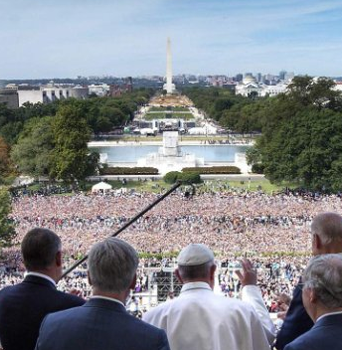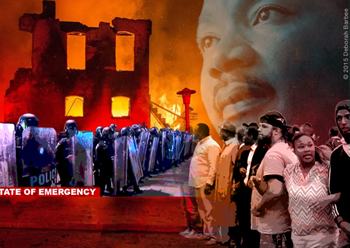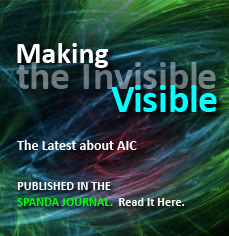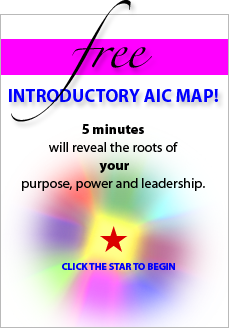Blog
The Pope Bridges The Divide 9-2001 To 9-2015 (Part 1)

On 9-11-2001 all of us felt the world had changed. We saw the heroic efforts of the passengers on the Pan Am 73 flight, the first responders who gave their lives to save others. We could see how times of crisis brought out the best in each of us.
Now we see that our massive reaction to deal with our raw pain and profound feelings of loss has resulted in thousands of times greater losses, more pain and even more suffering. As we bear the aftermath and massive expense of more defense and security, we sense a loss of freedom and a decrease in our inability to cope with our most pressing challenges. Our politicians are gridlocked; voters lash out in anger, key businesses after economic rescue show little evidence of learning from their failures. The massive inequity in wealth distribution grows wider.
Then a humble man with an amazing grace that enabled him to become Pope of the Catholic Church arrives and completes a shift in consciousness, accelerated by the events of that awful day in 2001. He provides a bridge that honors and transcends the despair to reveal the hope that we can draw from the goodness in each of us. We know that that goodness provides the resource we need for the greatest challenges we face.
Those challenges, as I have shown in my previous blogs, require us to use all three faces of power equally: control to get things done, influence to balance the interest of different parties, and appreciation to understand the effect of our actions and joint agreements on the common good.
Our efforts have been failing because we have learned that control, power over others, is not enough; that we have to use influence, power with others; but we have not yet learned to use appreciative power for the whole the common good.
It is this learning that paves the bridge that the Pope has built. It brings to a higher level the shift that Obama, Kerry and his colleagues are bringing about in global relations. They pay equal attention to the subtleties of context through enlightened diplomacy and to confronting the realities of the past. They are willing to seek a new truth by reinterpreting those realities in the light of future possibilities—all exercizes in appreciation.
Now Pope Francis comes to the United States and his visit to three cities closes the loop. He embodies the underestimated and misunderstood power of appreciation, and each of the cities he visited symbolize one each of the three faces. Washington DC centers his message on political power, the face of influence, the power of dialogue to open our hearts to all those affected by our priorities. He moves to New York where political decisions are turned into commercial form, and we see in the searing image of the Pope peering into the black hole the face of excessive control. Finally he turns to Philadelphia, the religio, the return to the origin of the American Revolution and the expression of its spirit: the face of appreciative power in the two Continental Congresses that produced its Constitution. He also returns to our common human origin in the family in which we are born of love. The family which nurtures us to be able to fulfill our roles by integrating into our lives our own versions of Washington, New York and Philadelphia.
In the most heartwarming way possible the Pope has shown us how to cross the bridge to move from the deepest forms of pain and suffering to a sense of responsibility equally for ourselves, for our relationships with others and for humanity.
The Three Faces Of Power In Baltimore

(Posted Orignally on LinkedIn on April 30 2015)
The rapid shift in outcomes from the devastating weekend of frustration, anger and destruction to the tense balance of forces that produced relative calm on Tuesday evening (April 28) reveals a fusion of three faces of power that gives hope. The hope is not only for a path to resolution in Baltimore but a new emphasis in approaches to other major conflicts.
In the illustration the first face of control power is the solid blue line of police, the power of authority and ‘zero tolerance’. The second is the more diffuse face of appreciation: the power that tries to understand the whole situation in all of its potential and realties. We represent this as the face of Martin Luther King emerging from the chaos of demonstration. His voice resonates from 1968—“riots are the voice of the unheard” and from his understanding that “Power properly understood is nothing but the ability to achieve purpose.”1 The third, the power of influence, is our power to mediate between the hopes and fears we appreciate and the necessity for order and control in the here and now. The line of impassioned representatives of the community, ordinary citizens, people of faith (all faiths), businesses, politicians, activists—even gangs such as the Bloods and the Crips—represent this power of influence.
It was this line, joining arms and using influence for both appreciation and control, that persuaded the forces of chaos and cooled the emotions that had heated too close to boiling point. They persuaded police on one side that heavy-handed control would actually create more chaos while helping the frustrated and angry protesters appreciate that they on the other side were better than their violence. Baltimore was better than that. They can stop the violence, protest peacefully and at the curfew go home.
This is the line that is missing in so many of our major conflicts—in our political deadlock, in the Iran nuclear program negotiations, in the conflicts in the Middle East, Africa, and Asia. The huge, systemic problems we face are so difficult precisely because they affect us all and have no solution unless we find a way to do our part. Toya Graham, famously chastising her son who had picked up a rock to throw at police, illustrates what we mean.
Our civilization has, for the most part since the collapse of the Soviet Union, learned that we cannot manage complex societies through command and control. We have learned through development of influence mechanisms such as the market, democracy and strategic alliances that we can influence what we cannot control. However, we have done so by using that influence for control. We have not yet learned to use influence for both appreciation and control equally. Thus politicians at election time come to the poorer sections of our country and pay attention and say the right things to control the vote. But as in 1968, in the east and west of Baltimore, few of those promises are fulfilled.
Our civilization, then, has evolved to use influence for control without a full appreciation of the situation. When using influence even our well-intentioned systems encourage us to withhold information, distort its importance and even to lie to obtain more control of our desired outcomes. Even worse influence for control is responsible for much of the corruption, the great income inequities, and the sense of despair felt by those left behind in our influence calculus.
We need to develop our social, political and economic systems so that they use equally the three faces of power, the face that appreciates the whole situation, the face that influences for both appreciation and control, and the control face that gets things done.
Further exploration of the three faces of power can be found on www.aic-3.com.
1. Martin Luther King, Jr. Excerpt from The Drum Major Instinct, Last presidential address, Southern Christian Leadership Conference, 1967
Transforming
Ourselves,
Our Organizations,
and Our World more..


